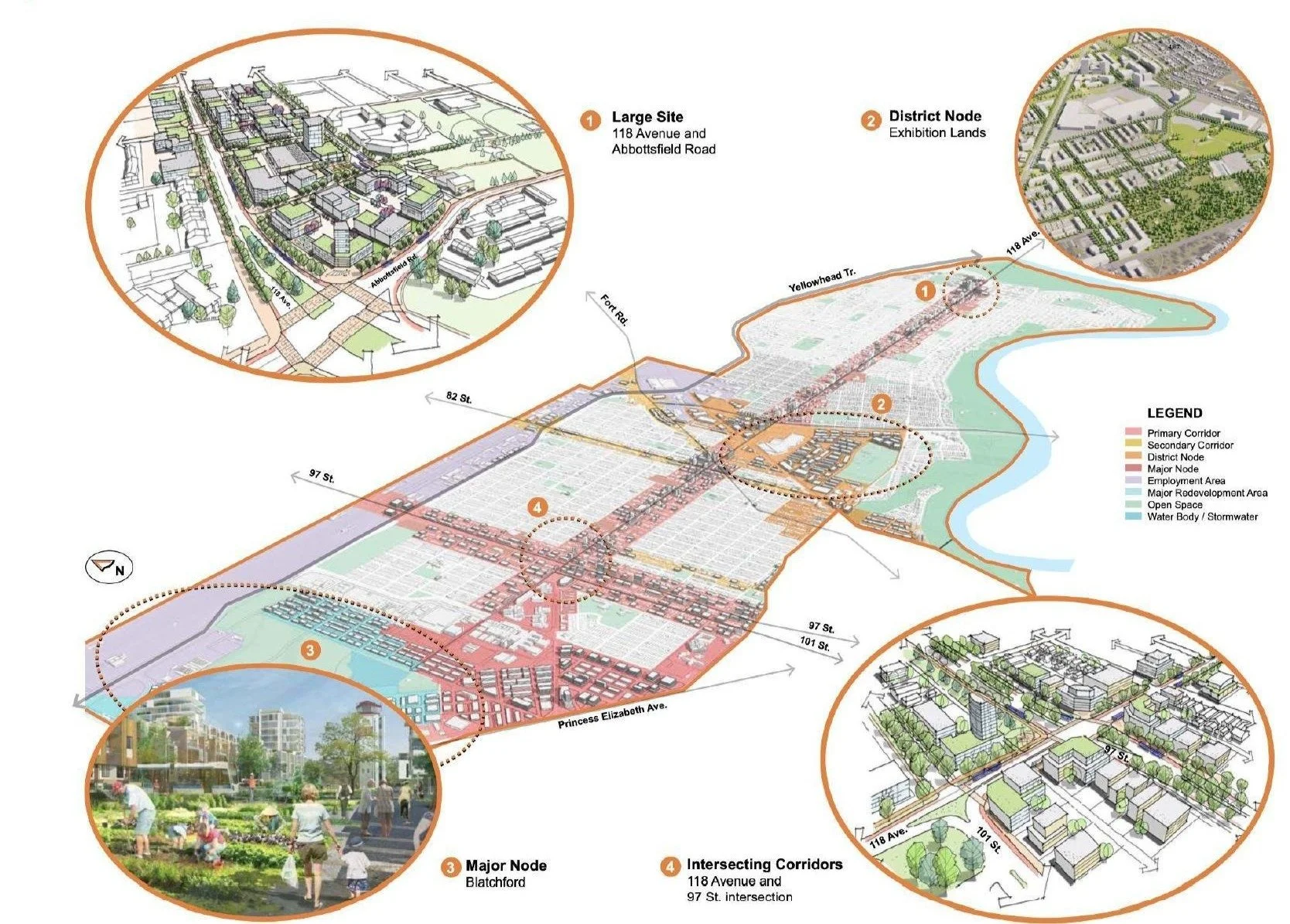January 9, 2023
City Council
City of Edmonton
1 Sir Winston Churchill Square
Edmonton AB, T5J 2R7
RE: Draft District Plans
To Mayor and City Council:
The Infill Development in Edmonton Association (IDEA) is an educational and advocacy nonprofit, non-partisan association that represents over 180 city builders and city shapers. Our purpose is to drive change toward people-centred communities within Edmonton’s mature neighbourhoods. The majority of our members are small and local businesses, passionate about executing Council’s City Plan goals.
IDEA believes that getting District Plans right will be critical to creating 15-minute communities, and at this point, we suggest that Council gives Administration support and more time to make the necessary changes to align with City Plan. District Planning and Zoning Bylaw Renewal do not need to be approved at the same time.
IDEA’s Review Summary - District Planning
Upon our review of the Draft District General Policy and Draft District Plans, IDEA is concerned that the documents do not i) demonstrate a commitment to intensification and equity or ii) adequately implement City Plan’s goal of achieving a growth target of 50% infill. We have identified key areas of concern.
1) Draft District General Policy Specific Feedback
In general, we have significant concerns with the form and content of the draft District General Policy. From a user experience perspective, the need to consult and cross-reference two documents—the General Policy as well as the applicable District Plan—is unwieldy and confusing. We suggest integrating the general policies more clearly into individual plans.
In addition, we are concerned that many of the policy statements prioritize existing urban development instead of welcoming opportunities to realize a driving goal of City Plan: to diversify our housing and commercial opportunities to achieve 15-minute communities.
We have identified key areas of concern in the General Policy:
1) Intensification in Nodes and Corridors
We propose removing geographic restrictions on low- and mid-rise development within the corridors, and widening the corridors to allow more multi-unit housing developments that are not directly on major roads. There is no reason, for example, that mid-rise and low rise development cannot work just as effectively in all secondary nodes and corridors.
The reality of the real estate market is that opportunities for (re)development may not be available within the 1.25 million intensification areas, so development needs to be an option within all nodes and corridors to ensure we achieve City Plan’s vision of creating 15-minute communities.
2) Urban Mix Policies
In much the same way as the Residential Infill Guidelines felt outdated from its onset, IDEA believes the policy statements tied to urban mix are both subjective and prohibitive to redevelopment.
Additionally, the location criteria for low-rise development in the urban mix area are far too restrictive. The majority of Edmonton’s mature and established neighbourhoods have low density development that will be changing in order to achieve the environmental, financial and social goals outlined in City Plan. We need to acknowledge and facilitate that change.
3) ARPs
We believe that all ARPs in redeveloping areas need to be repealed as they do not align with the goals of City Plan and will create barriers as our City works focus on redevelopment, energy transition and equitable neighbourhoods.
2) Draft District Plans Specific Feedback
Boundaries of Nodes and Corridors - expand geographic restrictions on intensification in Nodes and Corridors by widening the corridors and encouraging a full range of mid-rise development.
Maps - at times, the maps have so much information that it impedes their usefulness. Digitizing the maps with toggled overlays would make them less overwhelming to the viewer.
More clarity - is needed for readers to understand how the District Plans work in conjunction with the District General Policy.
Existing ARPs - continue to impede development and will be doubly problematic in the ways they conflict with core elements in the district plans and City Plan.
3) Suggested Solutions
In summary, we would ask the City of Edmonton to consider the following proposed actions as they continue the drafting process:
Review the alignment of City Plan and Draft District General Policy.
Remove geographic restrictions on intensification in Nodes and Corridors identified in City Plan.
Widen the corridors and encourage intensification aligned with City Plan.
Allow mid-rise development (up to eight storeys), without exception, directly on secondary corridors and low-rise development, without exception, within the corridors off the key roadways.
Integrate the general policies more clearly into individual plans to improve the user experience for these documents in general.
Repeal all ARPs in the redeveloping area that do not apply to City-led projects.
Digitize the maps to help them be user-friendly and helpful in the redevelopment process for all users within a reasonable time frame.
As District Plans will have a significant impact on how our City grows. IDEA believes that District Planning and Zoning Bylaw Renewal do not need to be approved at the same time. The City can work with the new Zoning Bylaw and City Plan while we work together to achieve the shared goals and clarity of District Plans. IDEA would like to thank City Council for their continuous work in implementing City Plan.
Thank you for your time. If you have any questions, please contact IDEA via Mariah Samji at mariah@infilledmonton.com or 780-951-6926.
Sincerely,
Letter sent to Edmonton City Council, Office of the City Clerks, Deputy City Manager of Urban Planning and Economy


